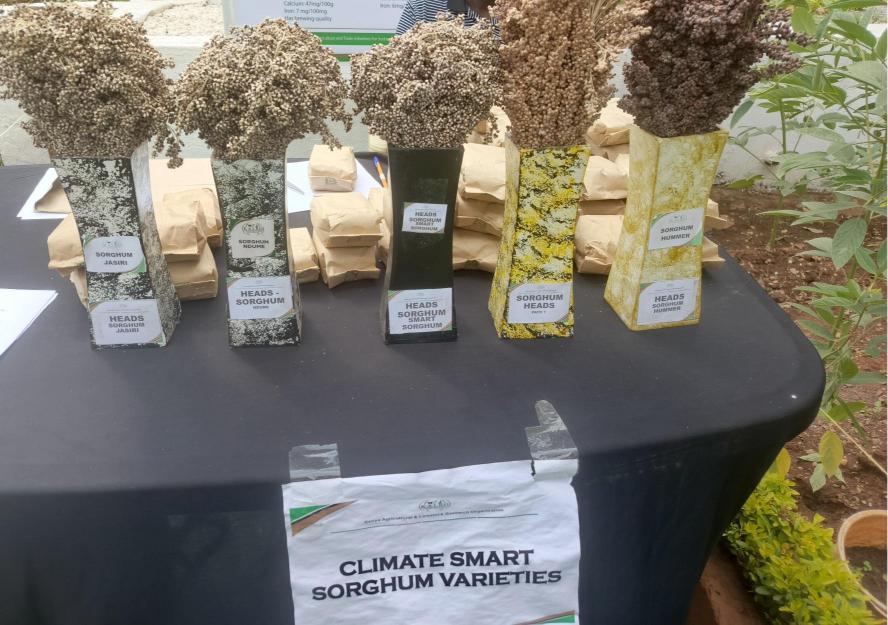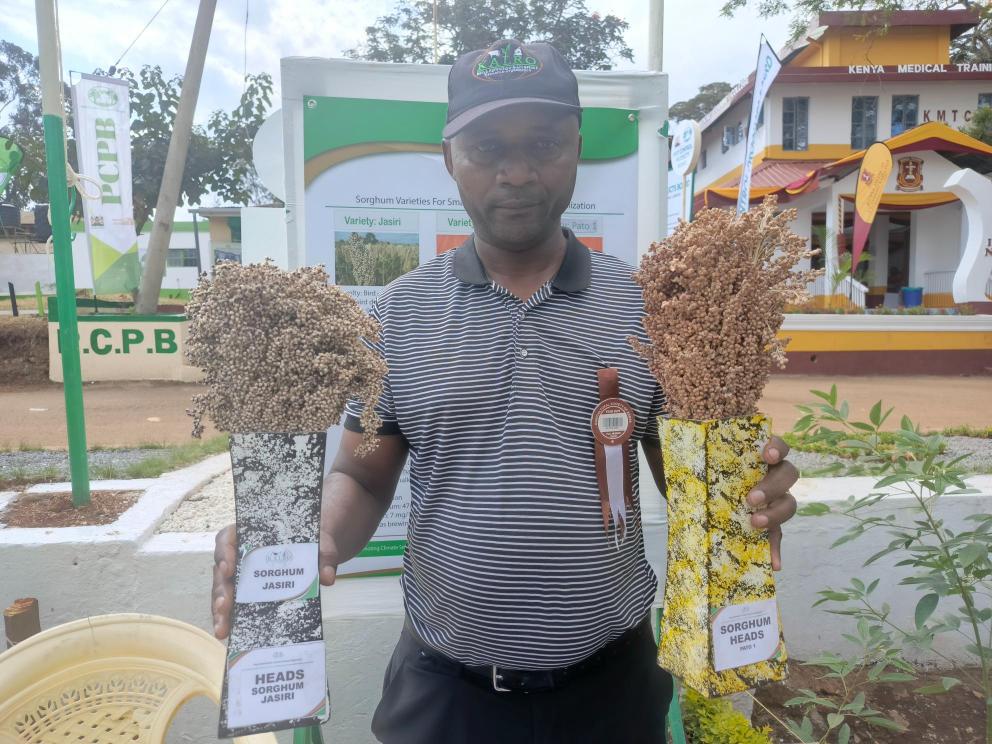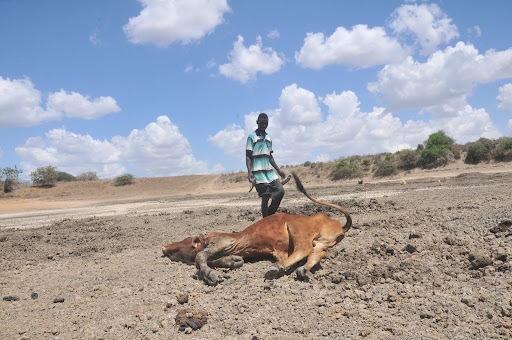 Climate-smart sorghum
varieties developed by the Kenya Agricultural and Livestock Research
Organizsation /AGATHA NGOTHO.
Climate-smart sorghum
varieties developed by the Kenya Agricultural and Livestock Research
Organizsation /AGATHA NGOTHO.
For years, sorghum farmers across Kenya have watched helplessly as quelea birds ravaged their crops, leaving behind devastating losses.
Now, a new line of climate-smart sorghum varieties developed by the Kenya Agricultural and Livestock Research Organisation (Kalro) is offering farmers hope against bird damage and the harsh effects of drought.
Urbanus Mutuku, a research technician at Kalro Katumani, is showcasing five newly released climate-smart sorghum varieties at the ongoing Nairobi International Trade Fair.
He said the innovations are designed to tackle two persistent challenges facing sorghum farmers—bird damage and drought.
“Most farmers in Kenya have been affected by birds and drought. Our sorghum varieties are addressing those challenges and farmers are quickly adopting them,” Mutuku said.
So far, more than 12,000 farmers in Kitui, Makueni, Machakos, Tharaka Nithi and Busia counties are growing the new varieties.
Mutuku said sorghum is usually attacked by birds during the milk stage. However, these varieties have unique traits that make them unattractive to birds.

Urbanus Mutuku, a research technician at Kalro Katumani, showcases five newly released climate-smart sorghum varieties at the ongoing Nairobi International Trade Fair /AGATHA NGOTHO.
“During the milk stage, the panicles are compact, the grains are dark, and the bitterness from high tannin levels discourages birds from feeding.
They may taste, but they won’t continue feeding,” he said.
By harvest time, the tannin levels reduce, ensuring the grain is palatable for human and animal consumption.
The five varieties include white types such as Jasiri, Smart Sorghum and Ndume; a brown variety called Pato 1; and a red variety known as Hummer.
Mutuku said beyond resilience, they also offer nutritional benefits, being rich in calcium, iron and proteins.
“These sorghums also contain the stay-green trait, which allows photosynthesis to continue even under dry conditions, leading to better yields,” Mutuku said.
“Their shallow roots enable them to take advantage of even light showers, making them particularly suited for Kenya’s changing climate.”
He said farmers can access the seeds through Kalro centres nationwide, retailing at about Sh400 for a 2kg packet.
Kalro is also promoting the varieties by distributing trial packs and linking farmers to markets, including opportunities in brewing and seed production.
Mutuku encouraged farmers to embrace the new technologies.
“Climate is changing, and we must adapt. These sorghums not only secure food for households but also offer income opportunities through trade,” he said.
According
to reports by EABL and Kenyatta University, sorghum is a drought and
heat-tolerant crop, making it a vital food security option in Kenya’s dryland
regions and a strong alternative to rain-dependent crops such as maize.
Findings by Kalro and Tegemeo Institute further indicate sorghum’s dual-purpose value: its grain is consumed by humans and used in animal feed, while its stover (stalks) serves as nutritious fodder. The crop thrives in light sandy soils and heavy black cotton soils.
In
Kenya, sorghum is predominantly cultivated in dry areas across the Western,
Eastern and Coast regions, including counties such as Meru, Tharaka Nithi,
Kitui, Machakos, Makueni, Taita Taveta, Tana River, Migori, Homa Bay, Kisumu,
Siaya, Busia, West Pokot, Elgeyo Marakwet, Baringo and Kirinyaga-Mwea.















